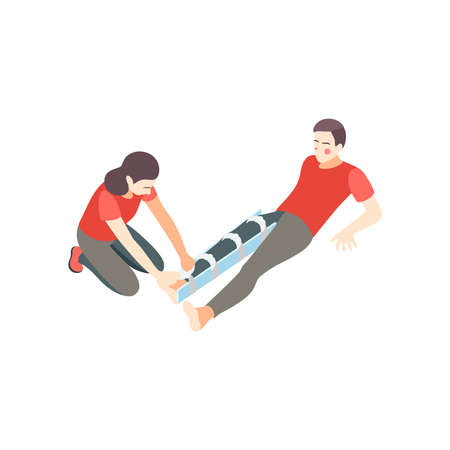Introduction to Post-Exercise Recovery in the UK Context
In the United Kingdom, post-exercise recovery is shaped by a blend of cultural traditions and practical considerations unique to British society. Whether on a chilly rugby pitch in Yorkshire or after a spin class in London, how athletes and fitness enthusiasts hydrate and recover reflects both local habits and scientific understanding. Choices between sports drinks and water are not merely matters of preference; they are influenced by longstanding beliefs about health, accessibility of products, marketing trends, and even the unpredictable British weather. This article explores these intertwined factors, providing insight into how hydration strategies in the UK differ from those elsewhere, and why understanding local context is crucial for optimal recovery practices.
2. Physiological Differences: Sports Drinks and Water
When considering post-exercise recovery, it is essential to understand the physiological mechanisms that differentiate sports drinks from water. Both options serve crucial roles in rehydration, but their specific benefits diverge when we examine hydration, electrolyte balance, and energy replenishment.
Hydration Mechanisms
Water is fundamentally effective at replenishing lost fluids during exercise, especially for moderate-intensity activities common across the UK, such as jogging in the park or a brisk walk along the seafront. Its simplicity makes it an accessible choice for most Britons, ensuring rapid absorption without additives. However, prolonged or high-intensity activities—think of a local Sunday league football match or a lengthy cycling session through the Lake District—result in more significant fluid and electrolyte losses, which plain water may not fully address.
Electrolyte Balance
Sports drinks are specifically formulated to replace not only fluids but also electrolytes like sodium and potassium lost through sweat. This is particularly pertinent in the British climate where fluctuating temperatures can sometimes mask dehydration symptoms, leading to an underestimation of electrolyte needs. The inclusion of electrolytes in sports drinks helps maintain osmotic balance and supports nerve function during recovery, whereas water alone may dilute blood sodium levels if consumed in large quantities after intense exertion.
Energy Replenishment
Another key distinction lies in carbohydrate content. British sports drinks often contain glucose or sucrose to help restore muscle glycogen depleted during extended periods of activity. For those participating in endurance events such as the London Marathon or charity bike rides across Yorkshire, this energy replenishment can be vital for optimal recovery. In contrast, water does not supply any calories or carbohydrates and thus cannot contribute to immediate energy restoration post-exercise.
Comparison Table: Water vs Sports Drinks in Recovery
| Water | Sports Drinks | |
|---|---|---|
| Hydration Efficiency | High for mild to moderate activity | High for prolonged/high-intensity exercise |
| Electrolyte Replacement | None | Contains sodium, potassium, etc. |
| Energy Provision | None | Contains carbohydrates/sugars |
| Cultural Relevance (UK) | Common at amateur/recreational level | Popular among competitive athletes and long-duration events |
Summary Perspective
The choice between water and sports drinks hinges on exercise duration and intensity, as well as individual recovery needs. While water suffices for light to moderate activities—a staple of many British routines—sports drinks offer targeted benefits for those engaging in longer or more strenuous exercise sessions by addressing hydration, electrolyte loss, and energy requirements simultaneously.

3. British Sports Culture: Preferences and Habits
When considering the debate between sports drinks and water in recovery, it is essential to examine the distinctive trends and attitudes present within British sports culture. In the UK, hydration practices vary significantly across grassroots participation and professional levels, each shaped by tradition, accessibility, and evolving science.
Grassroots Sports: Tradition Meets Practicality
For many amateur athletes and community clubs throughout Britain, water remains the default choice for rehydration. This preference is rooted in practicality—water is widely available, cost-effective, and familiar. On local football pitches, cricket greens, and rugby fields, reusable water bottles are a common sight. The perception persists that for moderate activity or youth sports, water suffices for basic hydration needs without unnecessary additives.
The Growing Appeal of Sports Drinks
However, in recent years, there has been a noticeable shift among some amateur athletes towards incorporating sports drinks into their routines. This change is partly influenced by marketing campaigns from leading brands as well as increased awareness of nutritional science. Still, concerns about sugar content and artificial ingredients mean that uptake remains cautious. Parents and coaches often weigh up these factors before introducing sports drinks to younger players.
Professional Level: Science-Led Hydration Strategies
Within elite British sport, hydration strategies are far more nuanced and tailored. Professional football clubs, rugby teams, and Olympic squads frequently employ nutritionists who recommend specific fluids based on sweat loss analysis and performance data. Here, sports drinks are more commonly used during intense training sessions or matches where electrolyte replacement is critical. Nevertheless, water continues to play an important role in daily hydration outside periods of high exertion.
Cultural Attitudes: A Balanced Approach
Overall, British attitudes towards sports drinks versus water reflect a blend of scepticism and scientific openness. While tradition favours water for its simplicity and safety, there is a growing recognition of the potential benefits offered by formulated beverages under certain conditions. The prevailing mindset encourages moderation—using water as the staple while reserving sports drinks for scenarios where additional recovery support is justified by intensity or duration of exercise.
4. Nutritional Guidelines and Scientific Evidence
When evaluating the best strategies for post-exercise recovery, it is essential to consider both established British nutritional guidelines and current scientific research. The Eatwell Guide, endorsed by Public Health England, outlines the importance of hydration as part of a balanced lifestyle. According to these guidelines, water should be the primary beverage of choice, while sugary drinks, including many sports drinks, ought to be consumed sparingly due to their high sugar content.
Current British Recommendations on Hydration
The National Health Service (NHS) suggests that adults should aim for 6-8 glasses of fluids daily, with water being preferred. However, during periods of intense physical activity or prolonged exercise—especially in hot or humid conditions—additional hydration may be necessary. The British Dietetic Association also notes that for most recreational athletes, water will suffice for rehydration unless the session exceeds an hour or involves significant sweat loss.
Scientific Evidence: Water vs Sports Drinks
Recent UK-based studies have investigated the effectiveness of water compared to sports drinks in aiding recovery. The table below summarises key findings from recent research:
| Hydration Option | Key Benefits | Limitations |
|---|---|---|
| Water | – Readily available – Zero calories and sugar – Suitable for most recovery needs – Supports natural thirst cues |
– Lacks electrolytes and carbohydrates – May not fully restore salt losses after heavy sweating |
| Sports Drinks | – Contains electrolytes (e.g., sodium, potassium) – Provides carbohydrates for energy replenishment – Useful for endurance athletes or prolonged sessions |
– Often high in sugars – Not always necessary for moderate exercise – Can contribute to excess calorie intake if overused |
Practical Implications for Britons
The consensus among British health authorities is clear: while sports drinks may play a role for elite or endurance athletes, particularly when exercise is intense and prolonged, water remains the optimal choice for everyday hydration and recovery in most scenarios. Over-reliance on sports drinks can inadvertently lead to increased sugar intake—a concern highlighted in national public health campaigns aimed at reducing obesity and dental decay.
Conclusion: Evidence-Led Choices
In summary, aligning hydration strategies with both scientific evidence and UK nutritional guidelines supports the notion that water is generally sufficient for recovery after typical workouts. Sports drinks should be reserved for situations where rapid electrolyte and carbohydrate replacement is warranted, underscoring the importance of tailoring hydration approaches to individual needs and exercise contexts within the British sporting landscape.
5. Environmental and Cost Considerations in the UK
When weighing up sports drinks versus water for recovery, British consumers increasingly factor in environmental sustainability, accessibility, and cost. The production and packaging of sports drinks generally involve significant plastic waste and a higher carbon footprint compared to tap water, which is readily available across the UK and delivered through an extensive public infrastructure. With growing awareness of single-use plastics, many Britons prefer refillable water bottles, aligning with government initiatives to reduce plastic pollution.
From a financial perspective, tap water is virtually free at home or easily accessible in public places such as gyms, parks, and leisure centres. In contrast, purchasing branded sports drinks can become costly over time, especially for those who train regularly. Even supermarket own-brand versions come at a premium compared to the negligible expense of tap water. For families or community sports teams operating on tight budgets, this cost differential is even more pronounced.
Sustainability is further reinforced by local councils and sports organisations promoting water refilling stations at events and facilities. This not only supports eco-friendly habits but also ensures hydration remains inclusive and accessible regardless of socio-economic background. Sports drinks, while convenient for specific needs, may be seen as less sustainable both in terms of packaging waste and long-term affordability.
In summary, when taking environmental impact and cost into account within the British context, water emerges as the more sustainable and accessible option for most people engaged in regular exercise. While sports drinks have their place for certain athletes or situations, the broader trend in the UK leans towards prioritising water for recovery—benefiting both personal finances and the planet.
6. Practical Recommendations for British Athletes
Understanding the British Sporting Landscape
British athletes engage in a diverse array of sports, from football and rugby to rowing and cricket. Each discipline presents unique hydration challenges, particularly when considering the UK’s often unpredictable weather. Recovery strategies must therefore be tailored not only to the demands of the sport but also to local climate and individual needs.
Hydration Advice by Demographic
Youth and Amateur Athletes
Younger players and those participating at grassroots level typically benefit most from water during recovery, given their shorter training sessions and lower sweat rates. For school sports days or park football, water should remain the staple, with attention paid to encouraging regular sips before, during, and after activity.
Elite and Endurance Athletes
For those training intensely or competing in prolonged events—such as marathon runners or professional cyclists—sports drinks containing electrolytes and carbohydrates can be advantageous for efficient rehydration and glycogen replenishment. This is particularly pertinent during summer tournaments or indoor competitions where heat stress may be higher, even in the British climate.
Factoring in Climate and Seasonality
In cooler months, water remains effective for most post-exercise recovery scenarios. However, on unseasonably warm days or during heatwaves occasionally experienced in the UK, athletes should monitor their sweat loss more closely. In these circumstances, especially after extended play or heavy perspiration, a balanced sports drink may help restore sodium levels and support optimal recovery.
Sport-Specific Guidance
- Team Sports (e.g., Football, Rugby): Water suffices for most matches and training sessions under typical British conditions. Sports drinks may be introduced after highly intensive games or back-to-back fixtures.
- Endurance Events: Sports drinks become increasingly relevant post-event, aiding muscle recovery and energy replacement after significant carbohydrate depletion.
- Racket Sports (e.g., Tennis): With varying match lengths and indoor/outdoor settings, hydration strategies should flex according to exertion levels and venue temperature.
Personal Preferences and Practicality
Ultimately, personal taste plays a significant role in adherence to hydration routines. Some athletes find flavoured sports drinks more palatable after exercise, supporting better fluid intake. Others prefer water for its simplicity and availability. British athletes are encouraged to trial different options during training rather than experimenting on competition day.
Summary: An Individualised Approach
No one-size-fits-all solution exists; instead, British athletes should base their recovery hydration choices on sport type, individual physiology, environmental conditions, and personal preference. Consulting with a qualified sports nutritionist can help refine these strategies further for optimal health and performance.

